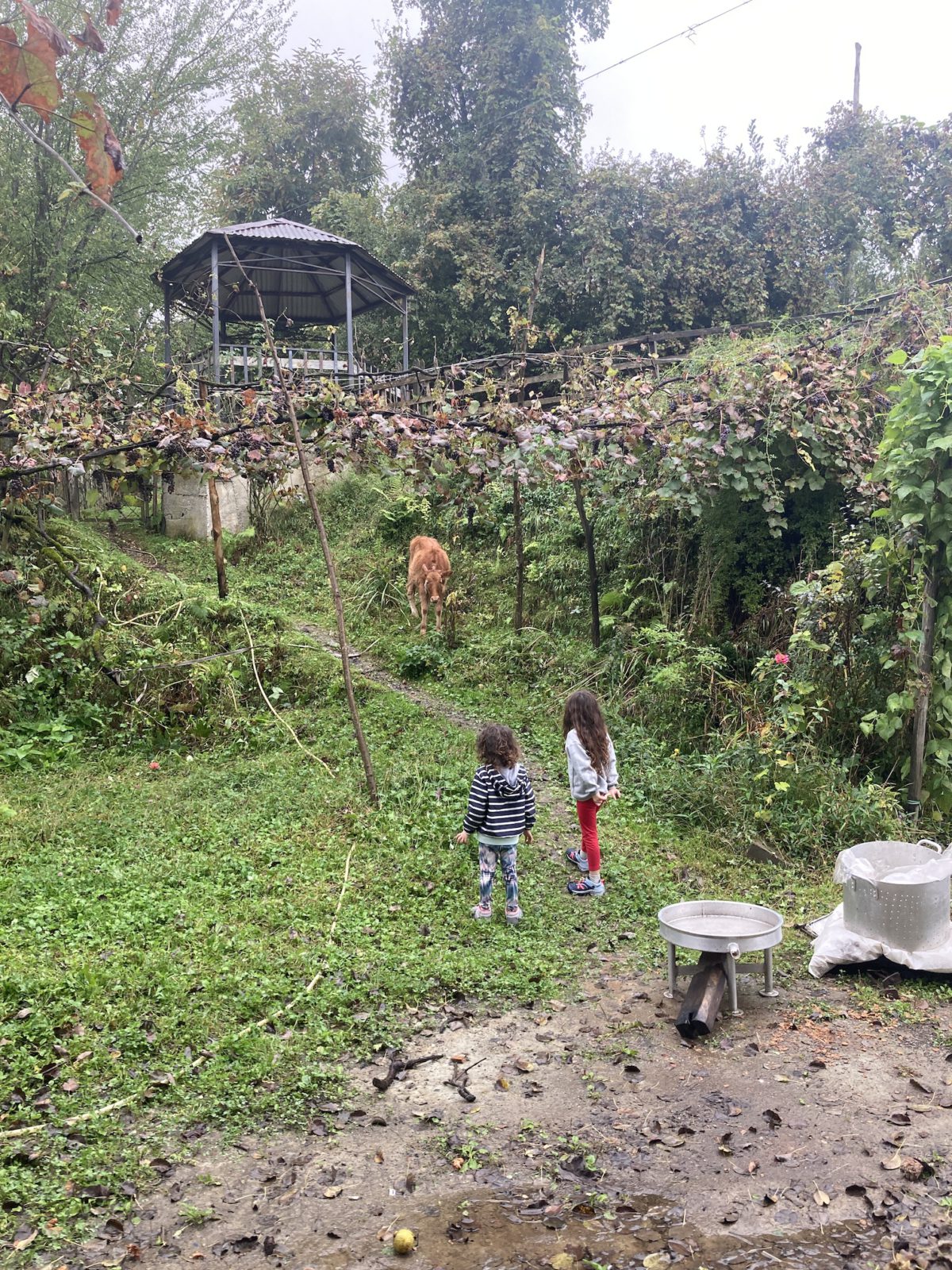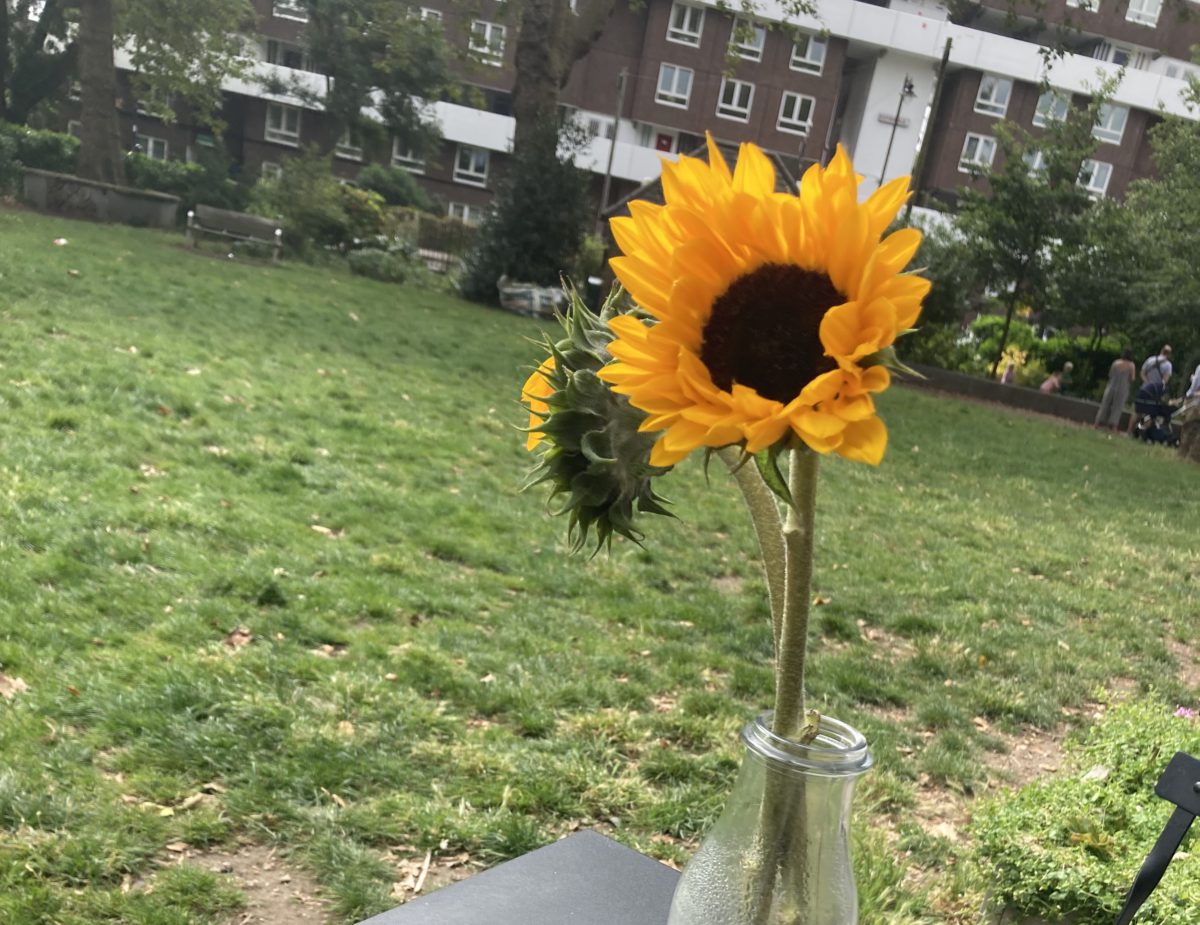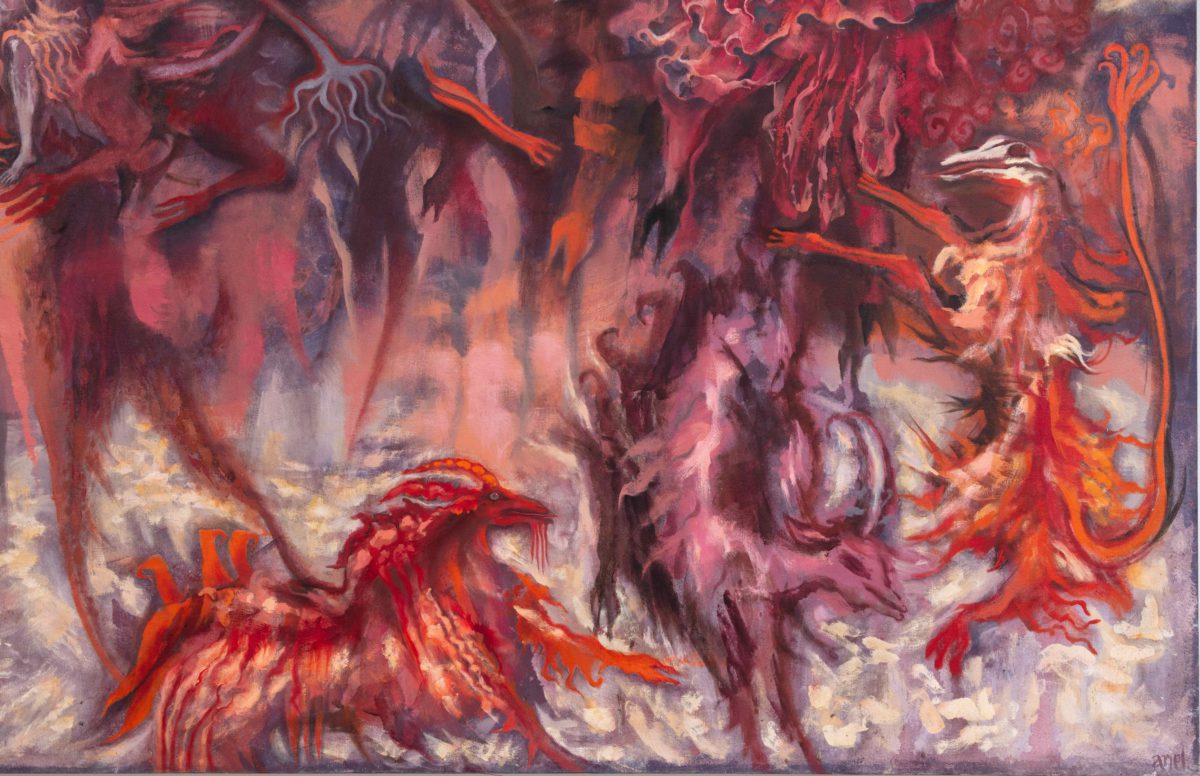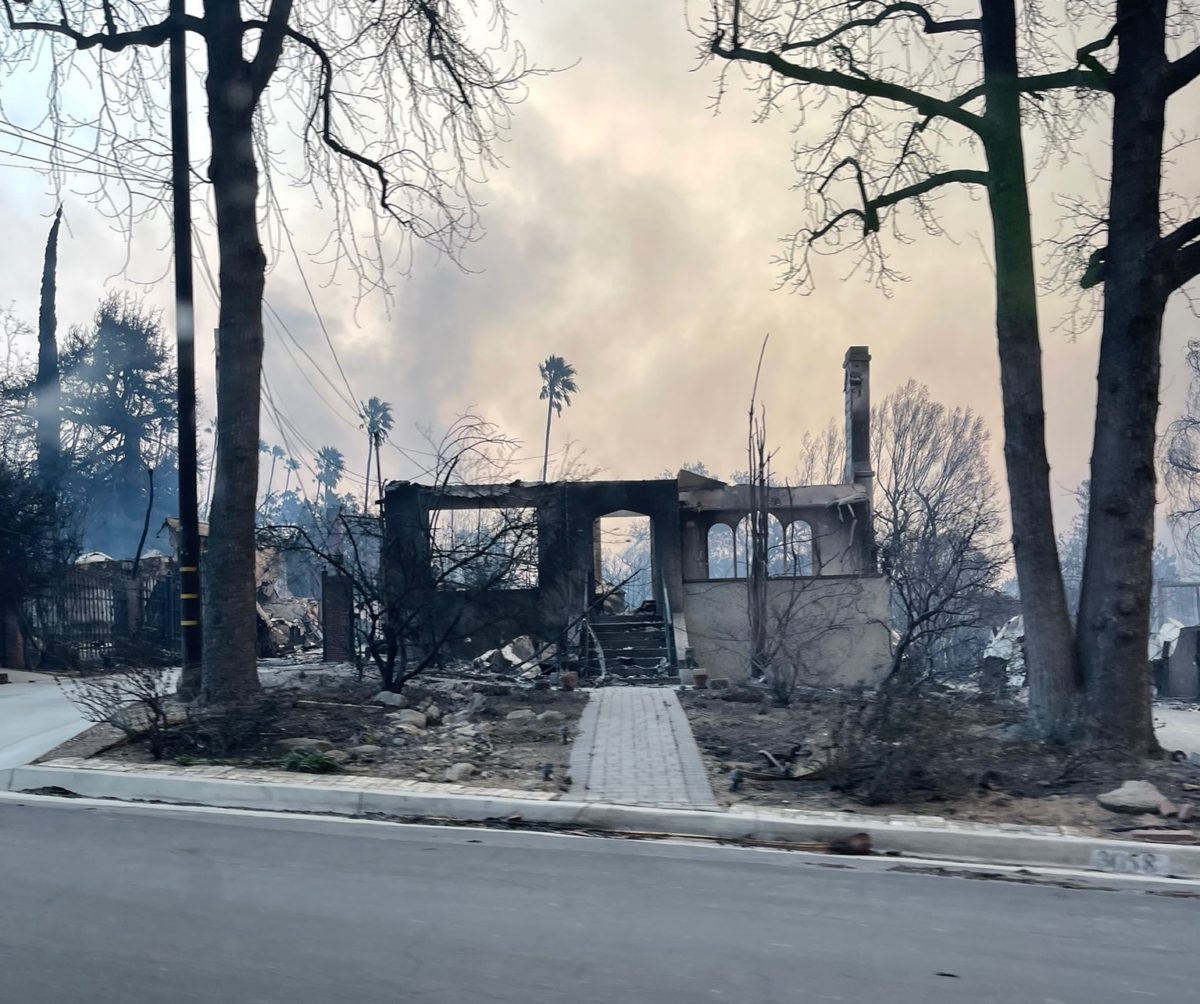Notes from the 2021 Venice Biennale of Architecture

Il Chiesa del Santissimo Redentore, designed by the Venetian genius Andrea Palladio in the late 16th century, was commissioned to mark the city’s deliverance from an onslaught of plague which killed 50,000 people, or one in every three Venetians. That number equates to Venice’s current population nearly 500 years later, now the only inhabitants of a city struck by a similarly relentless disease. Apparently not suffering, they rather seem to be enjoying Venice as it “should be.” With tourism banned, the piazzas feel airy and open, and the sounds of seagulls are no longer muffled by the babble of tourists. Yet this is the view not of a Venetian but rather of one wide-eyed foreigner who happened to gain access to the city in ways that might never again be possible—at least not until another bout of plague.
How rare indeed, having travelled thousands of miles across the Atlantic, to spend thirty minutes alone in Redentore, save for the kind woman at the ticket booth and the man who came to gather change and extinguish candles, and to remember that, behind the all too well-circulated images of the city and hordes of tourists, there are works that can make you feel alone: present such that the pressures of identity give way to a frightening blissfulness of feeling. Words fail to communicate the intensity of the deeply private, deeply cherished moments. Perhaps you’ve felt the same. But sitting in the nave, thinking as I sometimes do about architecture, the ongoing pandemic, or anything else, I realized, embarrassingly, that a word already existed for what I was experiencing during that especially beautiful late afternoon alone in an eerily empty Venice, a word at the heart of all meritorious works of art and architecture: intimacy.
Like falling in love, bungee jumping, or getting a first tattoo, creative work (both the making and its encounter) is likewise full of these paralyzing critical moments, where one must cast aside potential consequences and take on risk.
It seems these kinds of experiences are less under-acknowledged and more avoided when speaking or writing about art or architecture. It is as if the potency of such experiences is too precious to name, like taming a wild animal, and the concurrent admittance of architecture’s requisite vulnerability is simply too personal to bear. To be intimate is to be vulnerable, after all. I am sure most artists can sympathize. As with public speaking, there is the fear of being exposed or more simply of looking stupid: easy enough to mask with rhetoric and ideas, yet always exceedingly obvious to the initiated. Or too there exists the fear of intimacy for its own sake, even in those most private of circumstances, where one must accept the malleability and transience of one’s very own identity. Like falling in love, bungee jumping, or getting a first tattoo, creative work (both the making and its encounter) is likewise full of these paralyzing critical moments, where one must cast aside potential consequences and take on risk.
Likewise, art and architecture’s requisite sensitivity is anathema to the clockwork of ordinary, utilitarian life. I am reminded of some words by John Cage: “When you start working everybody is in your studio—the past, your friends, enemies, the art world, and above all, your own ideas—all are there. But as you continue painting, they start leaving, one by one, and you are left completely alone. Then, if you are lucky, even you leave.” John Cage was no painter, but as a composer he surely understood the risks and demands of creativity’s necessary solitude. I would argue such solitude is required of architecture as well, and that good architecture is always more than the sum of clear influences and criticisms, instead finding its greatest purpose and meaning in ambiguity.
Perhaps such sincerity is old hat. Or maybe I’m a hopeless romantic (this was Venice, after all). Following my visit to Redentore, I took a boat to San Giorgio, another Palladian masterpiece nearby, hoping again to have a few private moments in a great work of architecture. After disembarking and entering the church, I found to my horror, blocking the view of the altar, an enormous aluminum construction akin to a ziggurat, 50-feet tall and shoddily bolted together, ruining the overall experience of the architecture in ways that can only be described as criminal. A description of the installation, by the (appropriately named) artist Not Vital, reads as follows:
House to Watch the Sunset is 13 meters high, with each floor consisting of one room measuring 3×3 meters. The first floor has one door and one window, the second floor has one door and two windows, and the third one door and three windows. None of the floors are connected to each other, and each floor can only be reached by its own external stairs. Since 2005, House to Watch the Sunset has evolved to become a world spanning project, with one structure being erected on each continent. So far, Vital has realized House to Watch the Sunset in Niger using mud and straw, in the Brazilian Amazon using local wood, and in the Swiss Engadine mountains, using concrete made of local sand….
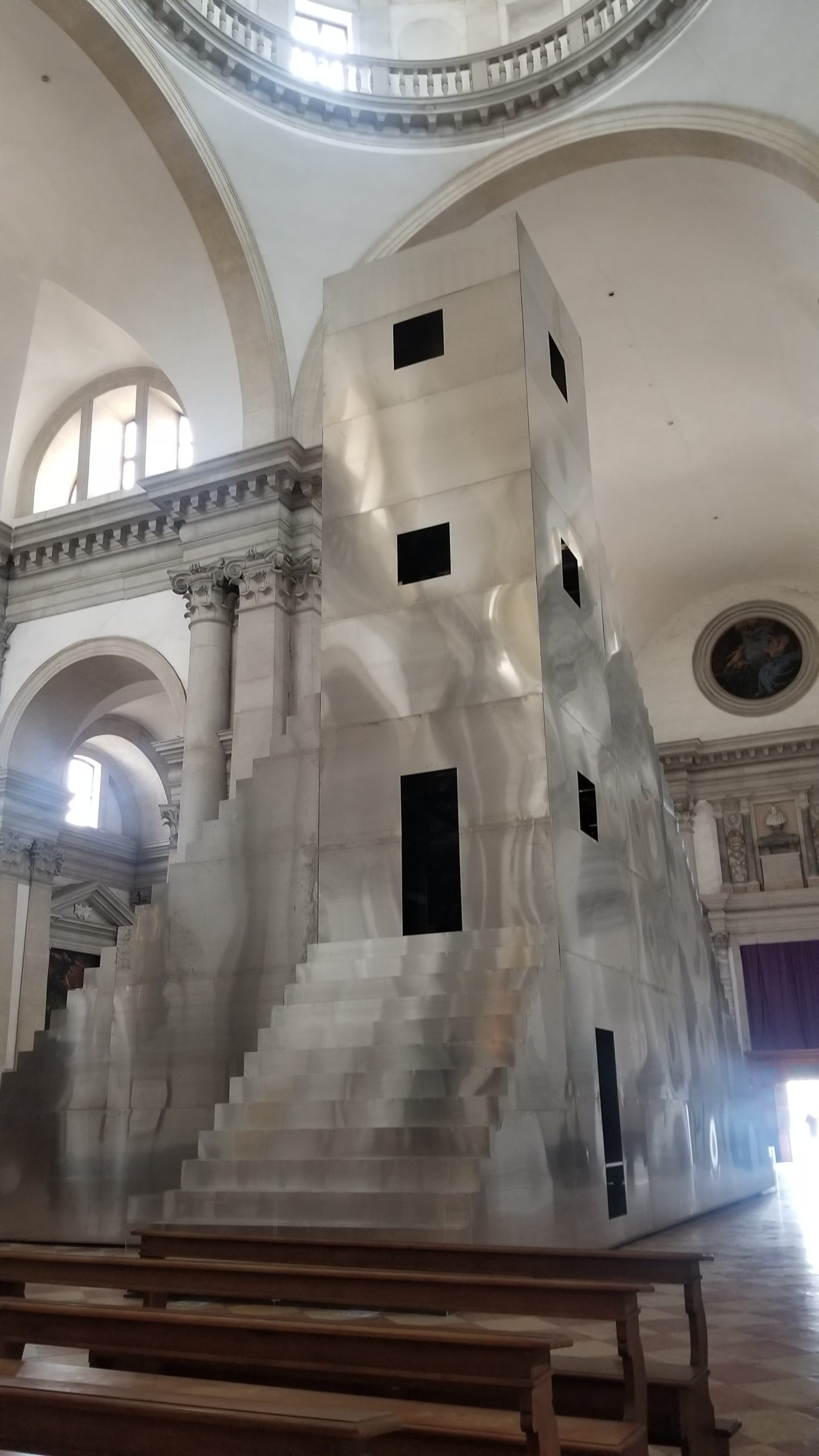
To paraphrase a colleague, one can envision the opening reception where such a description might be read, accompanied by the approving nods of semi-interested listeners. That is why I was in Venice, after all: to attend the ceremonies and receptions around this year’s Venice Biennale of Architecture. Or yet, one could quickly understand that such a work was never made to be seen in person (or occupied, as its doors and central staircase were off limits), but rather documented to be published on Instagram or in an upcoming exhibition catalogue. Not that many people apparently care. In the weeks and months leading up to the biennale, I had heard less of great works to be seen in the Giardini or Arsenale and more of the (admittedly delicious) Venetian culinary specialties, of opportunities to catch up with colleagues, and of the parties and panels that were now to be postponed until the late summer. Ironically, to see great architecture, I was told that I would need to leave the exhibition grounds and venture elsewhere, which had brought me that day across the lagoon to Redentore.
As experienced by me literally in San Giorgio and figuratively elsewhere in this year’s biennale, rhetoric curtails aesthetic experience. One might think that this year’s subdued opening would provide an opportunity for otherwise, yet throughout the biennale, one’s attention is flooded by a torrent of QR codes, wall texts, and proclamations absent much work of formal interest. In the Spanish Pavilion, such sentiments take material form as thousands of suspended sheets of text seem to fall from the sky, blocking one’s ability to inhabit the space of the pavilion’s central gallery. Elsewhere in the Giardini, pages from a publication were transferred to panels and mounted on the gallery’s walls, forming a monotonous display of otherwise compelling material in a strangely darkened basement space. Inversely, Germany seems to have forfeited its participation in the biennale altogether, opting instead to keep its pavilion completely empty except for a lone QR code in each gallery. Though I did not scan those codes, at least their beautiful pavilion was not cluttered with yet another interesting monstrosity, as I would discover in San Giorgio days later. Better to be damned if you didn’t than if you did—there is at least some consolation in that.
For sure there are gems in the vast roughness of the biennale. It was an extraordinary surprise to see five space gloves worn by NASA astronauts on display near the entrance of the Arsenale, brought to Venice by Nicolas de Monchaux. A woven carbon-fiber pavilion, supported by one of the Arsenale’s massive stone columns, was a similarly refreshing break from the overall flatness of the other installations. Not that this is necessarily the fault of the biennale or its director Hashim Sarkis. The overreliance on well-intentioned rhetoric and downright disavowal of sincere formal experimentation—of making actual architecture—is too widespread to be pinned on any one source. If the biennale is above all meant to be a cross-section of the discipline, Sarkis appears to have allowed for that, aesthetic consequences be damned.

At least the after party was nice and the weather was mild. After a few Spritzes, I forgot all about architecture and the biennale as we turned our attention to the nearby restaurant where we had dinner reservations. I had cuttlefish with polenta and a really good white wine I cannot now remember, followed by the obligatory shots of limoncello before we all ventured through San Marco back to our apartment for more drinks. Hours later, lying in bed half-drunk, I jotted down a now semi-embarrassing thought: “the intimacy of architecture has been surmounted by sociability.” I also remembered those proclamatory words of Susan Sontag, published amidst the societal upheavals of the 1960s: “Against a hermeneutics we need an erotics of art.” By morning, having again forgotten all about this, I sat for an espresso, watching the locals leisurely go about their workday before catching a boat toward the other side of the lagoon.

